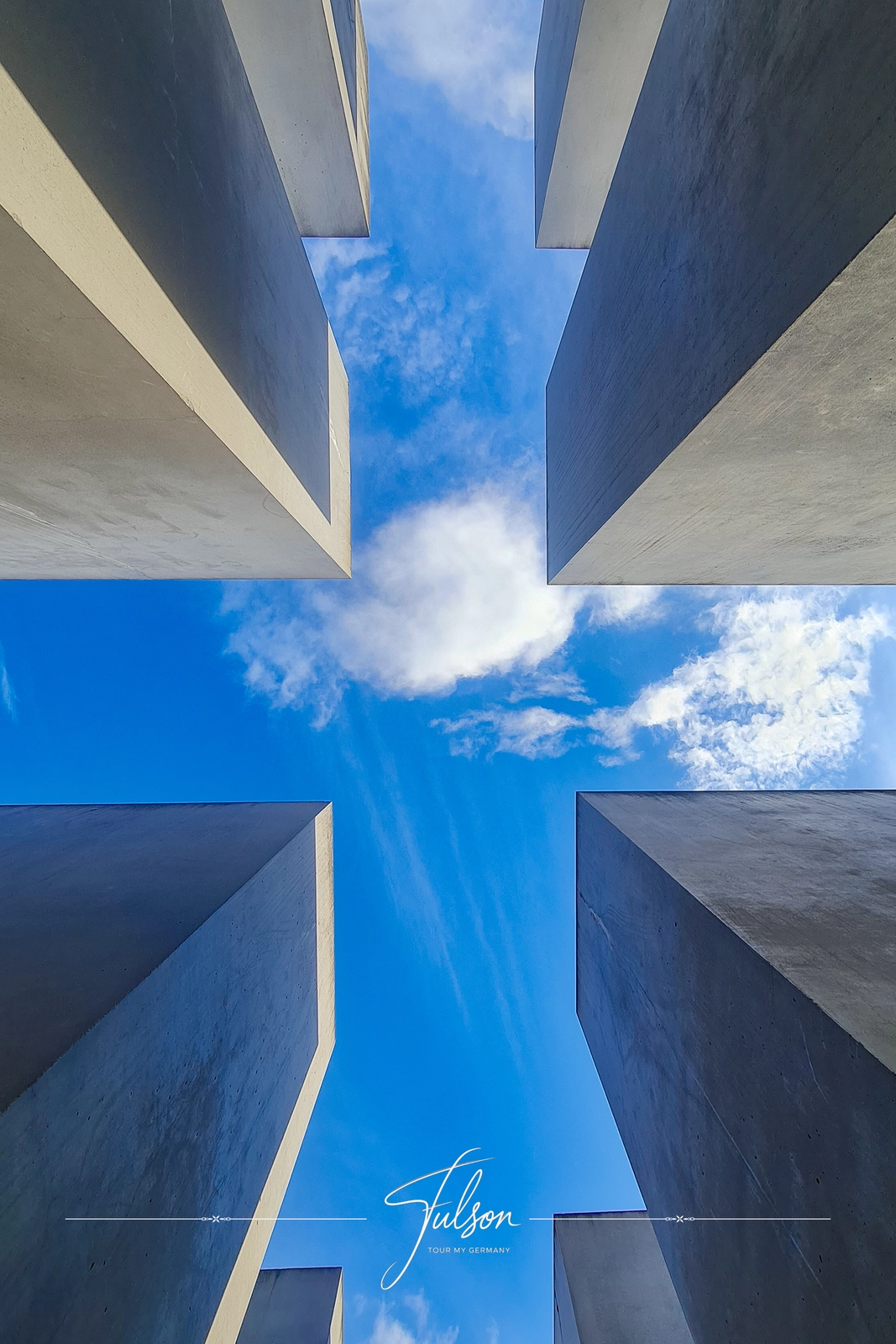- Home
- Top German Cities To Visit
- Berlin Photo Gallery
- Holocaust Memorial Berlin
Holocaust Memorial in Berlin: A Thought-Provoking Visit
By: Eran Fulson / Traveler & Blogger / After 15+ years of travel across North America and Europe, I now help travelers experience Germany beyond the guidebooks with firsthand tips and cultural insights.
About the Photo
This thought-provoking image captures the Memorial to the Murdered Jews of Europe in Berlin from a unique perspective—looking up between the towering concrete slabs (stelae).
The memorial, consisting of 2,711 stelae, was designed by architect Peter Eisenman to evoke feelings of disorientation, isolation, and reflection—mirroring the incomprehensible scale of loss during the Holocaust.
Walking through the memorial, the undulating ground and towering structures create an eerie, immersive experience, leaving visitors with a profound sense of remembrance.
There are many poignant memorials throughout Berlin, but the simplicity here makes this one even more emotive. When our tour stopped during the golden hour, this was perhaps the best time to visit. As ever, in places like these, be mindful of taking photos. Memorials are not backdrops for a selfie but rather the subject we stand alongside.
Historical Significance
- Opened in 2005, the memorial stands as a central place of remembrance for the six million Jewish victims of the Holocaust.
- Unlike traditional monuments, this design lacks explicit symbolism—allowing visitors to interpret its meaning personally.
- Beneath the memorial lies an underground Information Center, providing historical context, survivor testimonies, and details on the victims.
How to Visit the Berlin Holocaust Memorial
- Location: Near Brandenburg Gate, in central Berlin
- Opening Hours: Open 24/7, free of charge
- Closest Transport: S-Bahn: Brandenburger Tor, U-Bahn: Mohrenstraße
- Entry Fee: Free
Tip: Visit early morning or late evening for a quieter, more reflective experience.
Want More Berlin Landmarks & Memorials?
Berlin’s landmarks and memorials showcase its complex history and transformation. The Brandenburg Gate stands as a symbol of unity, while the Berlin Wall Memorial preserves stories of division and resilience.
The Victory Column and other historic sites highlight the city’s evolving identity. Exploring these places offers a deeper connection to Berlin’s past and present.
What is the meaning behind the Berlin Holocaust Memorial?
What is the meaning behind the Berlin Holocaust Memorial?
The memorial is designed to evoke feelings of loss, disorientation, and absence—symbolizing the scale and impact of the Holocaust. The 2,711 concrete stelae vary in height and are arranged in a grid, creating an unsettling yet thought-provoking atmosphere.
Can you walk through the Berlin Holocaust Memorial?
Can you walk through the Berlin Holocaust Memorial?
Yes, visitors are encouraged to walk through the memorial. The narrow paths and uneven ground create a disorienting experience, prompting personal reflection. However, climbing on the stelae is not allowed, out of respect for its purpose.
Is there a museum or information center at the Holocaust Memorial?
Is there a museum or information center at the Holocaust Memorial?
Yes. Beneath the memorial is the Information Center, which contains historical exhibits, survivor stories, and records of Jewish communities lost in the Holocaust. Entry is free, but expect security checks upon entry.

